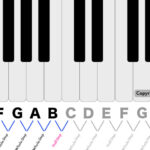The Cuban Tres Guitar, a captivating instrument at the heart of Cuban music, often intrigues those familiar with its six-stringed cousin, the guitar. However, the tres distinguishes itself with a unique stringing: three courses of two strings each, tuned in unison. This configuration is key to its distinctive sound and role in Cuban musical traditions.
 Nelson González playing his Cuban tres guitar
Nelson González playing his Cuban tres guitar
From Spanish Roots to Cuban Soul
Tracing its origins, the tres guitar’s lineage leads back to the Spanish bandola, a ten-stringed instrument. The journey from Spain to Cuba was arduous in earlier times, and the delicate strings of instruments often suffered breakage during the voyage and upon arrival. The scarcity of replacement strings in Cuba led to an ingenious adaptation: the ten-string bandola evolved into the six-string tres, maintaining musicality while adapting to practical constraints. This resourceful transformation highlights the blend of necessity and musical innovation that shapes instrument evolution.
The Tres in Cuban Son Music
The tres guitar’s soul is deeply entwined with the musical landscape of Oriente Province, particularly the Bayamo area along the Cauto River. It is the quintessential string instrument in Son, a foundational genre of Cuban music with African roots, emanating from Santiago de Cuba in Oriente Province. Son is characterized by its rhythmic subtlety and compelling warmth, a “blue flame” of musical expression, often featuring the tres alongside bongos, upright bass, and vocal harmonies. This genre showcases the tres’s ability to provide both rhythmic drive and melodic richness within an ensemble.
The allure of Havana during its golden era drew many musicians from Oriente Province, including those from the famed Buena Vista Social Club, seeking opportunities in the city’s vibrant hotel scene. This migration cemented the influence of Eastern Cuban musical styles, with the tres guitar at its forefront, into the broader Cuban musical identity.
 La Familia Valera Miranda performing Cuban Son music
La Familia Valera Miranda performing Cuban Son music
Contemporary Tres and Enduring Legacy
The captivating sounds of the tres continue to resonate today through artists like La Familia Valera Miranda. Based in Santiago de Cuba, a city that faced hardship after Hurricane Sandy, their music embodies resilience. Their album “De Santiago Yo No Me Voy” (“I’m Not Leaving Santiago”) proudly declares their roots and spirit. Their rendition of “El Manicero” (“The Peanut Vendor”), a classic Cuban tune, exemplifies the soulful and infectious nature of tres-led music.
The story of the tres guitar echoes the broader narrative of musical instrument invention born from adversity and ingenuity, as seen in instruments like the bandoneon, clavé, and berimbau. Human creativity often flourishes when faced with limitations, transforming challenges into unique artistic expressions.
Witnessing a master tres player like Felix Enrique Valera Alarcón (though he is mentioned playing a Cuban cuatro, a close relative in the tres family) live in concert is a testament to the instrument’s captivating power. His performances, such as those at Santiago de Cuba’s renowned La Casa de la Trova, highlight the virtuosity and vibrancy that the tres guitar brings to Cuban music. The tres guitar remains a vital and evolving instrument, carrying the rich heritage of Cuban music into the future.


